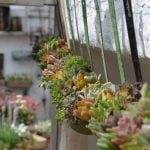When it comes to landscaping small gardens, gravel can be a versatile and practical option. Gravel is not only aesthetically pleasing but also low-maintenance, making it an ideal choice for those looking to create a beautiful outdoor space without the hassle of constant upkeep. In this article, we will explore how gravel can be used in a variety of creative ways to enhance the beauty and functionality of small gardens.
One of the great benefits of using gravel in small garden design is its versatility. Gravel can be used for pathways, borders, and as a decorative element in plant beds, allowing for endless possibilities in terms of design and layout. Additionally, gravel helps with water drainage and reduces weed growth, making it a practical choice for small garden owners looking to minimize maintenance.
Choosing the right type of gravel is crucial when designing a small garden. The size, color, and texture of the gravel can all have an impact on the overall look and feel of the garden.
In the following sections, we will discuss different types of gravel that are suitable for small gardens, as well as creative design ideas and maintenance tips to help you make the most out of this versatile landscaping material. So whether you’re looking to create a cozy seating area or add visual interest to your plant beds, gravel may just be the perfect solution for your small garden needs.
Benefits of Using Gravel in Small Gardens
Gravel is an excellent choice for small gardens due to its versatility and practicality. Here are some benefits of using gravel in small garden landscaping:
1. Low Maintenance: Gravel requires minimal maintenance compared to other types of garden surfaces, making it perfect for busy homeowners or those with limited mobility.
2. Weed Prevention: When properly installed, gravel can help prevent weeds from growing in your small garden, saving you time and effort in maintaining the space.
3. Drainage Improvement: Gravel allows for better water drainage in small gardens, which is essential for preventing water logging and root rot in plants.
In addition to these benefits, gravel also adds texture and visual interest to any garden space. Its natural aesthetic complements a variety of design styles, making it a popular choice among garden enthusiasts.
Whether you are looking to create a sleek modern look or a cozy cottage-style garden, gravel ideas for small gardens offer endless possibilities for creating a beautiful and functional outdoor space.
Choosing the Right Type of Gravel for Your Small Garden
When it comes to choosing the right type of gravel for your small garden, it’s important to consider both functionality and aesthetic appeal. With the wide variety of gravel options available, selecting the best type for your space can seem overwhelming. Here are some considerations to keep in mind when choosing gravel for your small garden:
- Size: The size of the gravel you choose will depend on how you plan to use it in your garden. Larger stones can create a more dramatic and noticeable effect, while smaller gravel can provide a more subtle and uniform appearance.
- Color: Gravel comes in an array of colors, ranging from natural earth tones to vibrant hues. Consider the overall color scheme of your garden and select gravel that complements or contrasts with existing elements.
- Texture: The texture of the gravel can add visual interest and depth to your garden design. Smooth pebbles can provide a polished look, while rougher, irregular stones can contribute to a more rustic feel.
In addition to these factors, it’s essential to consider the practical aspects of using gravel in your small garden. Drainage is critical in preventing water buildup and maintaining healthy plants, so be sure to choose a permeable gravel that allows water to flow through easily. Finally, consider how much maintenance you’re willing to commit to – some types of gravel may require more frequent raking or replenishing than others.
Ultimately, the right type of gravel for your small garden will depend on your unique preferences and needs. By carefully considering size, color, texture, drainage, and maintenance requirements, you can select the perfect gravel that enhances both the functionality and beauty of your outdoor space.
Creative Design Ideas for Using Gravel in Small Garden Landscaping
When it comes to designing a small garden, using gravel can offer a wide range of creative possibilities. One popular idea is to use gravel as a ground cover or mulch alternative. This not only adds texture and visual interest to the garden but also helps with drainage and weed prevention. Additionally, using different sizes and colors of gravel can create unique patterns and designs that can enhance the overall look of the garden.
Another creative design idea for using gravel in small garden landscaping is to incorporate it into a rock garden or dry creek bed. By strategically placing larger rocks and boulders along with gravel, you can create a natural and visually appealing focal point in the garden. This design not only adds dimension to the space but also requires minimal maintenance, making it ideal for small gardens.
For those looking to add an element of tranquility to their small garden, creating a gravel Zen garden can be the perfect solution. By raking patterns into the gravel and adding carefully placed stones and plants, a Zen garden can provide a peaceful retreat within a limited space. This design idea is not only aesthetically pleasing but also allows for relaxation and meditation within the confines of a small garden.
| Design Idea | Description |
|---|---|
| Ground Cover/Mulch Alternative | Using gravel as ground cover adds texture, visual interest, and helps with drainage. |
| Rock Garden/Dry Creek Bed | Incorporating gravel with rocks and boulders adds dimension and requires minimal maintenance. |
| Zen Garden | Raking patterns into the gravel creates a tranquil retreat for relaxation and meditation. |
Maintenance Tips for Gravel in Small Gardens
Gravel is a popular choice for small garden landscaping due to its low maintenance and aesthetic appeal. However, in order to keep your gravel garden looking its best, there are some important maintenance tips to keep in mind.
One key maintenance task for gravel gardens is regular weeding. While gravel can help suppress weeds, it’s still important to inspect the area and remove any unwanted growth that may pop up. This will help keep your small garden looking tidy and well-maintained.
Another important aspect of maintaining a gravel garden is proper drainage. Over time, debris and organic matter can accumulate in the gravel, causing drainage issues. To prevent this, it’s crucial to regularly rake and top-dress the gravel to ensure that water can flow through freely.
In addition to these tasks, it’s also important to periodically check for any displacement or erosion of the gravel. This can be caused by foot traffic, extreme weather, or even burrowing animals. By addressing these issues promptly, you can help preserve the overall look and function of your small garden landscaping.
| Maintenance Tips | Importance |
|---|---|
| Weeding | Keeps the garden looking tidy |
| Drainage | Prevents waterlogging and standing water |
| Displacement/Erosion | Maintains the overall look and function of the garden |
Incorporating Gravel With Plants and Flowers in Small Gardens
Creating Defined Beds
One way to incorporate gravel with plants and flowers is to create defined beds using gravel as a border. By outlining the planting areas with decorative gravel, you can add a clean and polished look to your garden while also creating a barrier that helps prevent weeds from encroaching on your plantings. Choose a contrasting color of gravel to make the bed stand out, or opt for a more subtle tone that complements the surrounding foliage.
Layering for Visual Interest
Another way to integrate gravel with plants and flowers is by layering it within beds or containers. By adding a layer of gravel on top of the soil around your plants, you can help retain moisture while also adding visual interest to the garden. Consider using different sizes and colors of gravel for added texture and depth.
Incorporating Gravel Paths
In addition to creating defined beds and layering with plants, incorporating gravel paths into your small garden can provide both form and function. A meandering path lined with vibrant flowers and lush greenery can create a charming focal point in your garden. Use contrasting or complementary colors of gravel for the path to enhance the overall aesthetic of your outdoor space.
By incorporating these ideas into your small garden design, you can create a harmonious balance between hardscape elements like gravel and softscape elements like plants and flowers. Whether you’re looking for low-maintenance options or simply want to add visual appeal to your outdoor space, integrating gravel with plants and flowers offers endless possibilities for creativity in small garden landscaping.
Creating Pathways and Borders With Gravel in Small Gardens
When it comes to small garden landscaping, gravel can be an excellent choice for creating pathways and borders. Not only does it add visual interest and texture to the garden, but it also serves a practical purpose by defining different areas and providing a stable surface for walking. Here are some creative ideas for incorporating gravel into the pathways and borders of your small garden.
Curving Pathways
One way to make the most of gravel in small gardens is by creating curving pathways that wind their way through the space. This not only adds visual interest but also creates a sense of exploration and discovery within the garden. The soft, natural look of gravel can enhance the beauty of these winding paths, adding a touch of rustic charm to the overall landscape.
Defined Borders
In small gardens, defining borders is essential for creating structure and organization within the space. Gravel can be used to create defined borders around flower beds, vegetable patches, or other garden features. By using different sizes and colors of gravel, you can create visually appealing borders that complement the overall design of your small garden.
Mixing Materials
For added visual appeal, consider mixing gravel with other materials such as stepping stones or pavers to create unique pathways or borders. This combination of textures and materials can add a sense of variety and contrast to your small garden landscape. Additionally, using different materials can help break up the monotony of gravel and add focal points throughout the garden.
Incorporating gravel into your small garden pathways and borders not only adds aesthetic value but also serves practical purposes in terms of maintenance and organization. With these creative design ideas, you can make the most of this versatile material in your small garden landscape.
DIY Projects Using Gravel for Small Garden Decor
One of the most appealing aspects of using gravel in small garden decor is its versatility for DIY projects. Gravel can be used in a variety of creative ways to enhance the aesthetic appeal of your outdoor space. Whether you’re looking to add a decorative touch to your garden or create functional elements, gravel can be an affordable and stylish option for DIY projects.
One popular DIY project using gravel is creating custom garden pathways. By outlining pathways with gravel, you can create a visually appealing and low-maintenance walking area in your small garden. This not only adds an interesting design element but also helps to define different sections of your garden, making it feel more organized and intentional.
Another creative way to use gravel for small garden decor is to build decorative borders. By layering different colors and sizes of gravel, you can create visually interesting borders around flower beds or other areas of your garden. This adds a unique touch to your outdoor space and can help prevent soil erosion, while also reducing the need for frequent maintenance.
For those interested in adding water features to their small gardens, gravel can be used as a decorative element in creating a dry creek bed. By strategically placing gravel along the path of the dry creek bed, you can achieve a natural and rustic look that adds charm and visual interest to your garden.
Incorporating these DIY projects using gravel for small garden decor not only adds personality and style to your outdoor space but also allows for easy customization based on your personal preferences and design aesthetic. Whether you’re looking to create pathways, borders, or unique features like dry creek beds, gravel provides an affordable and versatile option for bringing creative ideas to life in small gardens.
Conclusion
In conclusion, gravel is a versatile and practical option for small garden landscaping. Its many benefits include low maintenance, excellent drainage, and the ability to create visually appealing designs. By choosing the right type of gravel for your small garden, you can enhance its overall aesthetic while minimizing upkeep.
Creative design ideas for using gravel in small garden landscaping are abundant. From creating intricate patterns and shapes to incorporating decorative elements, there are endless possibilities for enhancing the visual appeal of your outdoor space. Additionally, incorporating gravel with plants and flowers can add texture and dimension to your small garden, creating a harmonious blend of natural elements.
Furthermore, gravel can be utilized in various DIY projects to enhance the decor of your small garden. Whether creating unique pathways or borders or crafting decorative features, the use of gravel adds a touch of charm to any outdoor space. As you explore the many options for utilizing gravel in small gardens, remember that embracing its versatility can truly elevate the overall design of your outdoor oasis.
Frequently Asked Questions
What Is the Best Color Gravel for a Garden?
The best color gravel for a garden ultimately depends on personal preference and the aesthetic of the garden. Some may prefer natural-looking gravel in earth tones, while others may opt for more colorful options to complement their plants and flowers.
Can I Lay Gravel on Top of Soil?
It is possible to lay gravel on top of soil, but it’s important to properly prepare the area before doing so. This includes removing any weeds or grass, leveling the soil, laying a weed barrier, and choosing the right type and size of gravel for proper drainage.
What Plants Grow Best in Gravel?
Many plants can thrive in gravel, especially those that require well-draining soil. Plants like succulents, cacti, lavender, rosemary, and yarrow are popular choices for gravel gardens. It’s essential to consider the specific growing conditions and requirements of each plant before planting them in a gravel bed.

Welcome to my gardening blog! I am passionate about plants and enjoy sharing my knowledge and experiences with others. In this blog, I will write about everything related to gardening, from tips on how to get started to updates on my own garden projects.





